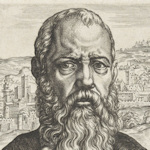
These are not the kind of cartoons you find in your local newspaper. Unless the paper dates back to 1550. And was the size of your garage. No, these are Jan Cornelisz Vermeyen’s paintings documenting Charles V’s Tunis campaign.
- Set of ten huge pictures full of graphic details
- Think of Vermeyen as an official war photographer of the 16th century
- Book your museum tickets* online
- See also:
The cartoons
(Vermeyen’s draft for the Siege of Tunis. Photo courtesy of the Rijksmuseum)
The Vermeyen cartoons served as life-sized, 1-to-1 templates for weavers when creating tapestries (the topic, incidentally, of the Kunsthistorisches Museum’s major year-end exhibition back in 2023).
Not just any tapestries, but a series of 12 giant works commemorating and recording Emperor Charles V’s Tunis campaign of 1535.
So you might consider it the 16th-century equivalent of a photo album, heavily photoshopped to impress visitors.
The Tunis campaign came about because the city had fallen to the Ottoman admiral, Barbarossa, in 1534 and now served as a handy base for Ottoman ships to go raiding.
This state of affairs didn’t go down well with Charles (1500-1558), who was the Habsburg King of Spain at the time. So he decided to do something about it.
Arms, armour, paintbrushes
Charles’s invasion fleet included what you might call an early war photographer – painter Jan Cornelisz Vermeyen – with instructions from the Emperor to record the (hopefully triumphant) mission.
The campaign indeed turned out to be a military and propaganda triumph for Charles, though Ottoman hegemony at sea would still continue. A few years after the event, Vermeyen received the commission to produce the huge cartoons.
Ten of the works now reside on the second floor of the Kunsthistorisches Museum, with plenty of accompanying information in English (also on the audio guide).
The cartoons certainly deserve a closer look (literally and figuratively). I was going to give them a miss, but my wife persuaded me otherwise. And I’m glad she did.
The images, which Vermeyen completed in collaboration with other artists, tell the story of the campaign in graphic detail.
Some of the battle scenes bear comparison with modern 18-rated video games: headless bodies spouting blood, gore-covered swords, and similar. But you find sweet touches too, like the artist picturing himself serenely drawing away in his notebook in the midst of the chaos of war.
At the time of writing, the museum had begun an extensive restoration project in light of the age of the cartoons and the fragility of the paper used by Vermeyen and his collaborators. You can support the museum’s efforts here.
Incidentally, you may spot the Vermeyen name elsewhere in the Kunsthistorisches Museum.
The son of our painter (also called Jan) became a renowned goldsmith, and one or two works of his appear in the Kunstkammer.
Vermeyen junior also made, for example, the crown that later became the formal imperial crown of the Austrian Empire.
